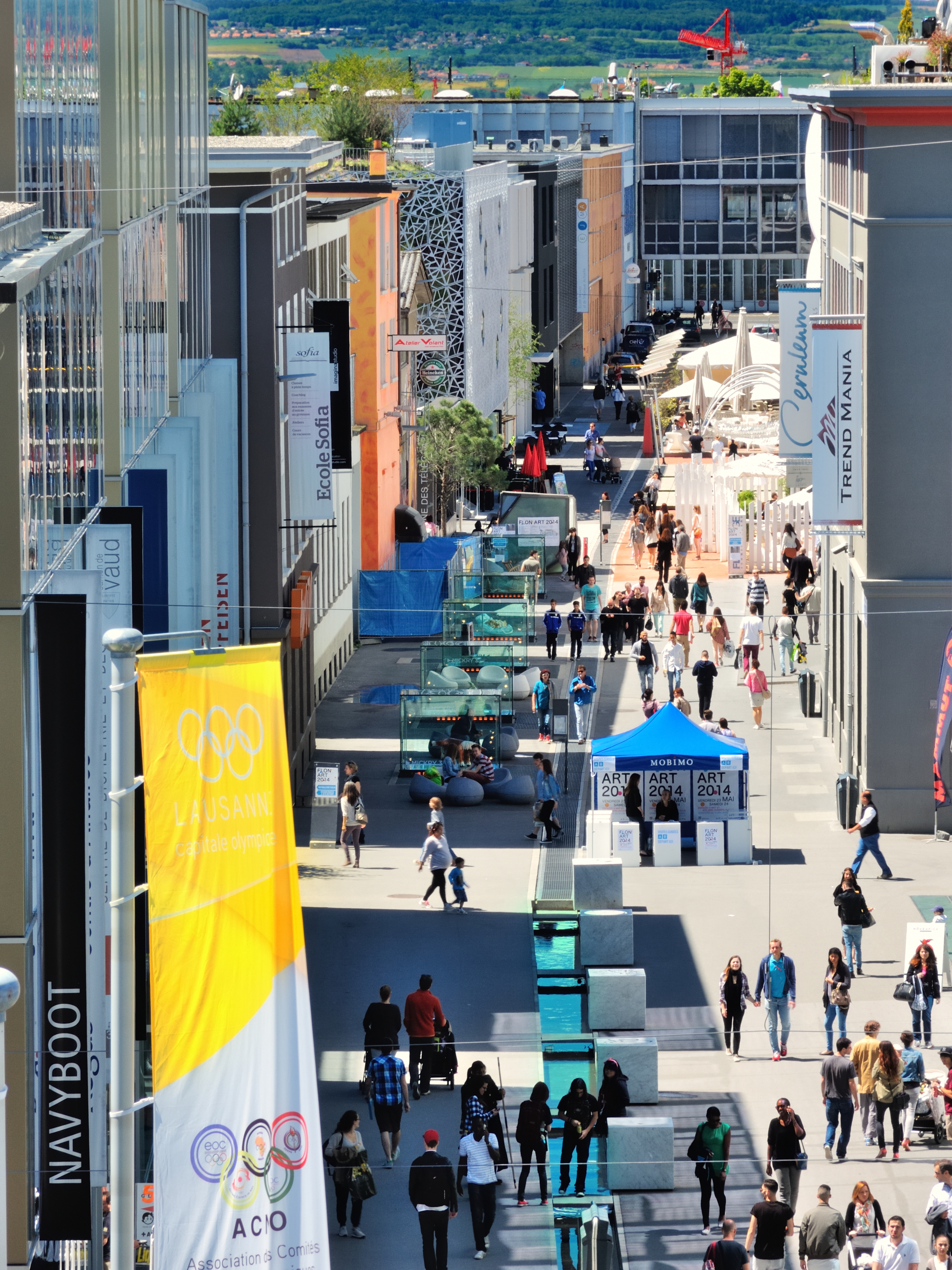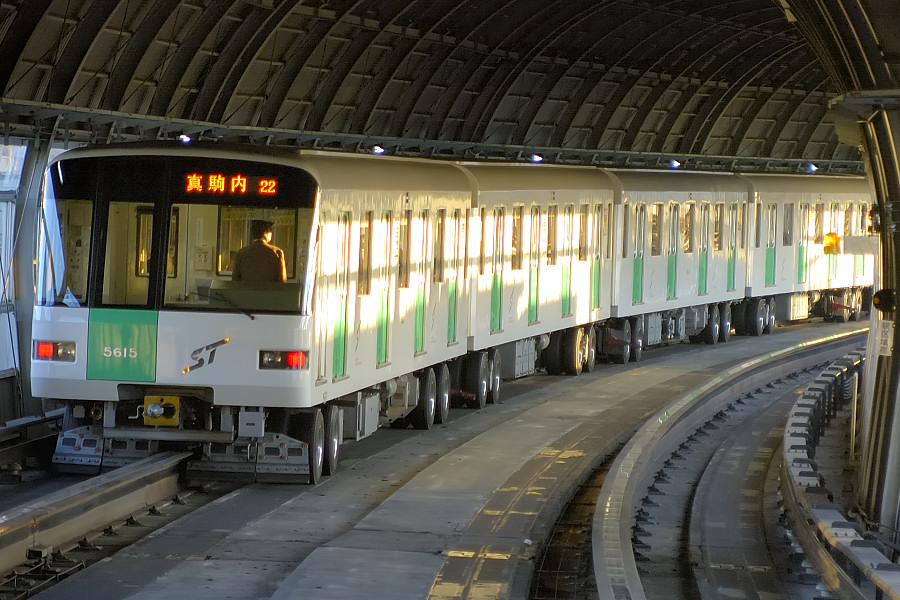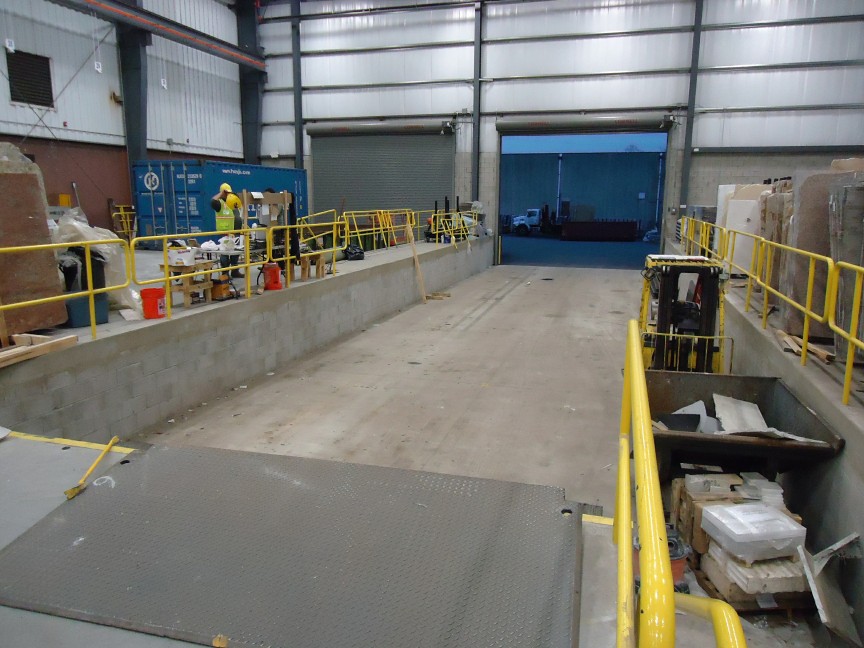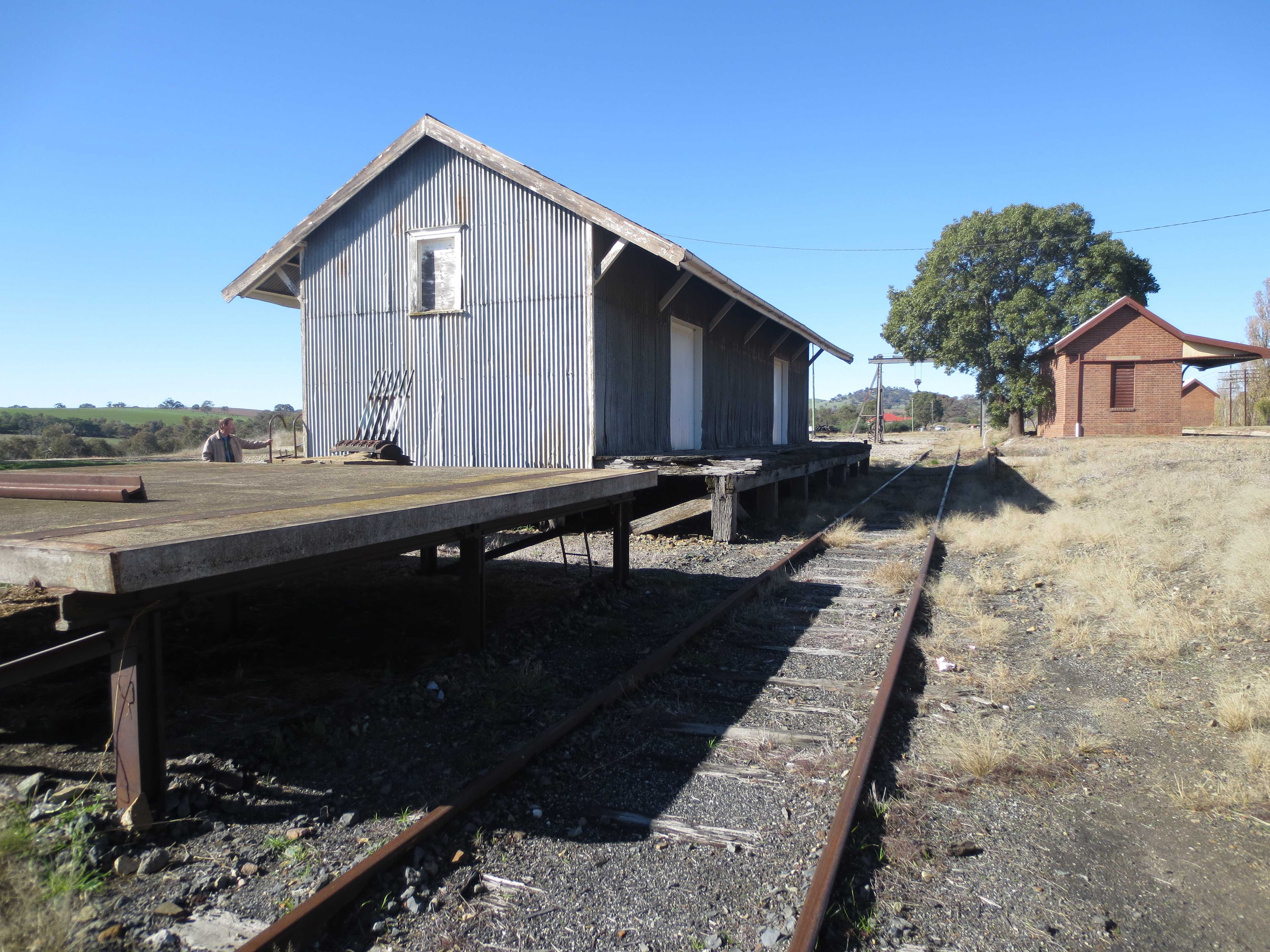|
Lausanne-Flon Station
Lausanne-Flon is a railway and metro station in the Flon district of central Lausanne, Vaud, Switzerland. It is the hub of the Lausanne Metro system. The station's initial building was also the first in the city to use electricity. A station rebuilding project was the subject of a design competition held in 1988. History Before the métro A railway station in this area dates back to the 1870s. Plans were made for the building of an atmospheric railway between Flon, the main Lausanne railway station and Ouchy as early as 1871. Work started on the station site, associated goods facilities and the tunnel under Montbénon, in 1874. The station opened in 1877, and trains were initially powered by a steam-pumped hydraulic system, the engines using water brought along purpose-built aqueducts from Bret Lake, north of Puidoux. This source of power was a precursor to the provision of electricity, and in 1882 the original Flon station became the first building in the city to have an ... [...More Info...] [...Related Items...] OR: [Wikipedia] [Google] [Baidu] |
Rapid Transit
Rapid transit or mass rapid transit (MRT), also known as heavy rail or metro, is a type of high-capacity public transport generally found in urban areas. A rapid transit system that primarily or traditionally runs below the surface may be called a subway, tube, or underground. Unlike buses or trams, rapid transit systems are railways (usually electric railway, electric) that operate on an exclusive right-of-way (transportation), right-of-way, which cannot be accessed by pedestrians or other vehicles, and which is often grade-separated in tunnels or on elevated railways. Modern services on rapid transit systems are provided on designated lines between rapid transit station, stations typically using electric multiple units on rail tracks, although some systems use guided rubber tires, magnetic levitation (''maglev''), or monorail. The stations typically have high platforms, without steps inside the trains, requiring custom-made trains in order to minimize gaps between train a ... [...More Info...] [...Related Items...] OR: [Wikipedia] [Google] [Baidu] |
Le Flon (Lausanne)
Le Flon is a district of the city of Lausanne, in Switzerland. It is served by Lausanne Métro lines 1 and 2 from Lausanne-Flon station. Location This area is in the bowl of a valley that has been filled. A river, also named Flon, once flowed through this valley and now runs underground. The area is situated in the central neighborhood of Lausanne. History The Flon was once a wooded and uninhabited valley. The early industrial development in the nineteenth century saw new mills, tanneries and fullers occupy the Flon valley, accompanied by a bad reputation due to the activity of leather work, which brought unpleasant smells, forcing Lausanne inhabitants to avoid the place. On March 12, 1874, the Compagnie du Chemin de fer Lausanne-Ouchy (which later became the Group Lausanne-Ouchy SA) was founded to provide transport for people and goods between the port of Ouchy, the station of the then Jura-Simplon line, and the Place Saint-François. The Company became the owner of the ... [...More Info...] [...Related Items...] OR: [Wikipedia] [Google] [Baidu] |
Rubber-tyred Metro
A rubber-tyred metro or rubber-tired metro is a form of rapid transit system that uses a mix of road and rail technology. The vehicles have wheels with rubber tires that run on rolling pads inside guide bars for traction, as well as traditional railway steel wheels with deep flanges on steel tracks for guidance through conventional switches as well as guidance in case a tyre fails. Most rubber-tyred trains are purpose-built and designed for the system on which they operate. Guided buses are sometimes referred to as 'trams on tyres', and compared to rubber-tyred metros. History The first idea for rubber-tyred railway vehicles was the work of Scotsman Robert William Thomson, the original inventor of the pneumatic tyre. In his patent of 1846 he describes his 'Aerial Wheels' as being equally suitable for, "the ground or rail or track on which they run". The patent also included a drawing of such a railway, with the weight carried by pneumatic main wheels running on a flat board t ... [...More Info...] [...Related Items...] OR: [Wikipedia] [Google] [Baidu] |
Rolling Stock
The term rolling stock in the rail transport industry refers to railway vehicles, including both powered and unpowered vehicles: for example, locomotives, freight and passenger cars (or coaches), and non-revenue cars. Passenger vehicles can be un-powered, or self-propelled, single or multiple units. A connected series of railway vehicles is a train (this term applied to a locomotive is a common misnomer). In North America, Australia and other countries, the term consist ( ) is used to refer to the rolling stock in a train. In the United States, the term ''rolling stock'' has been expanded from the older broadly defined "trains" to include wheeled vehicles used by businesses on roadways. The word ''stock'' in the term is used in a sense of inventory. Rolling stock is considered to be a liquid asset, or close to it, since the value of the vehicle can be readily estimated and then shipped to the buyer without much cost or delay. The term contrasts with fixed stock (infrastru ... [...More Info...] [...Related Items...] OR: [Wikipedia] [Google] [Baidu] |
Elevator
An elevator or lift is a wire rope, cable-assisted, hydraulic cylinder-assisted, or roller-track assisted machine that vertically transports people or freight between floors, levels, or deck (building), decks of a building, watercraft, vessel, or other structure. They are typically powered by electric motors that drive traction cables and counterweight systems such as a hoist (device), hoist, although some pump hydraulic fluid to raise a cylindrical piston like a hydraulic jack, jack. In agriculture and manufacturing, an elevator is any type of conveyor device used to lift materials in a continuous stream into bins or silos. Several types exist, such as the chain and bucket elevator, grain auger screw conveyor using the principle of Archimedes' screw, or the chain and paddles or forks of hay elevators. Languages other than English, such as Japanese, may refer to elevators by loanwords based on either ''elevator'' or ''lift''. Due to wheelchair access laws, elevators are ... [...More Info...] [...Related Items...] OR: [Wikipedia] [Google] [Baidu] |
Swiss Federal Railways
Swiss Federal Railways (german: link=no, Schweizerische Bundesbahnen, ''SBB''; french: link=no, Chemins de fer fédéraux suisses, ''CFF''; it, Ferrovie federali svizzere, ''FFS'') is the national railway company of Switzerland. It is usually referred to by the initials of its German, French, and Italian names, either as SBB CFF FFS, or used separately. The Romansh version of its name, ''Viafiers federalas svizras'', is not officially used. The official English abbreviation is "SBB", instead of the English acronym such as "SFR", which stands for ''Swiss Federal Railways'' itself. The company, founded in 1902, is headquartered in Bern. It used to be a government institution, but since 1999 it has been a special stock corporation whose shares are held by the Swiss Confederation and the Swiss cantons. It is currently the largest rail and transport company of Switzerland, and operates on most standard gauge lines of the Swiss network. It also heavily collaborates with ... [...More Info...] [...Related Items...] OR: [Wikipedia] [Google] [Baidu] |
Funicular
A funicular (, , ) is a type of cable railway system that connects points along a railway track laid on a steep slope. The system is characterized by two counterbalanced carriages (also called cars or trains) permanently attached to opposite ends of a haulage cable, which is looped over a pulley at the upper end of the track. The result of such a configuration is that the two carriages move synchronously: as one ascends, the other descends at an equal speed. This feature distinguishes funiculars from inclined elevators, which have a single car that is hauled uphill. The term ''funicular'' derives from the Latin word , the diminutive of , meaning 'rope'. Operation In a funicular, both cars are permanently connected to the opposite ends of the same cable, known as a ''haul rope''; this haul rope runs through a system of pulleys at the upper end of the line. If the railway track is not perfectly straight, the cable is guided along the track using sheaves – unpowered pulleys tha ... [...More Info...] [...Related Items...] OR: [Wikipedia] [Google] [Baidu] |
Warehouse
A warehouse is a building for storing goods. Warehouses are used by manufacturers, importers, exporters, wholesalers, transport businesses, customs, etc. They are usually large plain buildings in industrial parks on the outskirts of cities, towns, or villages. Warehouses usually have loading docks to load and unload goods from trucks. Sometimes warehouses are designed for the loading and unloading of goods directly from railways, airports, or seaports. They often have cranes and forklifts for moving goods, which are usually placed on ISO standard pallets and then loaded into pallet racks. Stored goods can include any raw materials, packing materials, spare parts, components, or finished goods associated with agriculture, manufacturing, and production. In India and Hong Kong, a warehouse may be referred to as a "godown". There are also godowns in the Shanghai Bund. History Prehistory and ancient history A warehouse can be defined functionally as a building in whic ... [...More Info...] [...Related Items...] OR: [Wikipedia] [Google] [Baidu] |
Puidoux
Puidoux () is a municipality in Switzerland in the canton of Vaud, located in the district of Lavaux-Oron. History Puidoux is first mentioned in 1134 as ''Puidos''. It was part of Saint-Saphorin until 1810 when it became an independent municipality. Geography Puidoux has an area, , of . Of this area, or 62.3% is used for agricultural purposes, while or 24.3% is forested. Of the rest of the land, or 10.5% is settled (buildings or roads), or 2.5% is either rivers or lakes and or 0.3% is unproductive land.Swiss Federal Statistical Office-Land Use Statistics 2009 data accessed 25 March 2010 Of the built up area, housing and buildings made up 2.8% and transportation infrastructure made up 4.2%. while parks, green belts and sports fields made up 2.3%. ... [...More Info...] [...Related Items...] OR: [Wikipedia] [Google] [Baidu] |
Goods Station
A goods station (also known as a goods yard or goods depot) or freight station is, in the widest sense, a railway station where, either exclusively or predominantly, goods (or freight), such as merchandise, parcels, and manufactured items, are loaded onto or unloaded off of ships or road vehicles and/or where goods wagons are transferred to local sidings. A station where goods are not specifically received or dispatched, but simply transferred on their way to their destination between the railway and another means of transport, such as ships or lorries, may be referred to as a transshipment station. This often takes the form of a container terminal and may also be known as a container station. Goods stations were more widespread in the days when the railways were common carriers and were often converted from former passenger stations whose traffic had moved elsewhere. First goods station The world's first dedicated goods terminal was the 1830 Park Lane Goods Station at the ... [...More Info...] [...Related Items...] OR: [Wikipedia] [Google] [Baidu] |
Ouchy
Ouchy is a port and a popular lakeside resort south of the centre of Lausanne in Switzerland, at the edge of Lake Geneva (french: lac Léman). Facilities Very popular with tourists for the views of nearby France (Évian-les-Bains, Thonon), Ouchy is also a favorite area for rollerskating (Lausanne, and Ouchy in particular, is considered a capital for this sport) and for skateboarding. The incredible views of the lake and the Alps, and the cooler air in summer have made Ouchy a popular place especially in the summer months. There is a major cluster of hotels – the Beau-Rivage Palace, the Château d'Ouchy, the Mövenpick hotel, etc. – and restaurants around the port. It is served by Lausanne Metro#Line M2, Lausanne Metro Line 2 from Ouchy station. In 2015, the metro station "Ouchy" was renamed "Ouchy-Olympique" to mark the 100th anniversary of the installation of the International Olympic Committee in Lausanne. The headquarters of the International Olympic Committee are a ... [...More Info...] [...Related Items...] OR: [Wikipedia] [Google] [Baidu] |
Lausanne Railway Station
Lausanne railway station (french: Gare de Lausanne) Is the main intercity and regional railway station for the city of Lausanne, Vaud, Switzerland. It is often known as Lausanne CFF to distinguish it from others in the town. Description Lausanne is a through station, which sits at the junction of the Simplon, Lausanne–Bern, and Lausanne–Geneva railway lines. Due to this, express passenger trains are available to a wide variety of destinations across the country. Passenger trains are primarily run by Swiss Federal Railways (SBB CFF FFS), with additional international trains run by companies from neighbouring France (TGV Lyria). There is also a network of local services from Lausanne, primarily as part of the RER Vaud, and platforms for line 2 of the Lausanne Métro. The metro station, Lausanne-Gare, was opened on 27 October 2008. Passenger facilities include Bureau de change, left luggage and lost property offices. Developments Significant improvements are planned fo ... [...More Info...] [...Related Items...] OR: [Wikipedia] [Google] [Baidu] |









